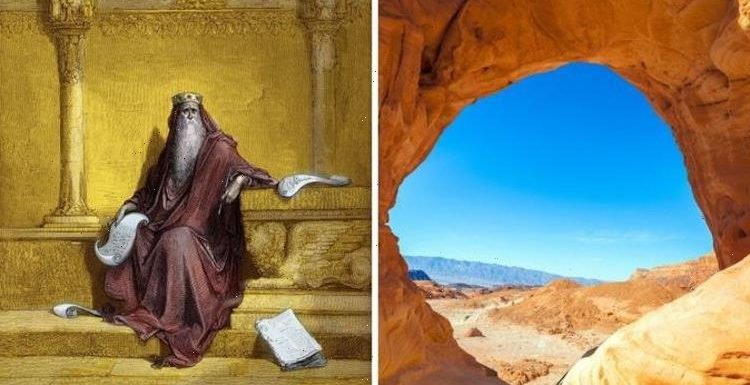
Israel: Expert discusses 1964 discovery in Timna Valley
We use your sign-up to provide content in ways you’ve consented to and to improve our understanding of you. This may include adverts from us and 3rd parties based on our understanding. You can unsubscribe at any time. More info
The region that encompasses Israel, Jordan, Palestine and Egypt is rich in ancient history. Much of Israel’s deserts have offered archaeologists scores of artefacts from hundreds, as well as thousands, of years ago. Perhaps the most famous discovery came when shepherds happened upon a series of manuscripts in jars in Qumran in the mid-20th century.
Later called the Dead Sea Scrolls, the parchments contained literature dated as early as the 8th century BCE.
Further south, deep in the Israeli desert, lies the Timna Valley.
Archaeologists began excavating the ancient site in 1964.
Since then, researchers have found what the Smithsonian Channel’s documentary, ‘Secrets: King Solomon’s Mines’, described as “countless ancient mines”, covering nearly 30 square miles.


One of the present-day lead archaeologists in the region, Professor Erez Ben-Yosef of Tel Aviv University, told the documentary that there are not just a few mines, but thousands.
He said: “Some of the shafts and alleys go more than 40 metres deep below the surface.”
Experts believed they were quarried by people forced to work in the hostile desert environment, with sweltering temperatures and scarce resources.
Prof Ben-Yosef continued: “We might think about slaves, or prisoners, or war captives, and some strong political entity making people work in the mines.”
JUST IN: Egypt archaeologists baffled by Christian town among ancient ruins

The discovery of ten workers’ camps appeared to back up the initial theory.
One, found on high ground, completely dwarfed the others.
A ring of sheer rock faces around the camp formed a perfect natural prison.
Prof Ben-Yosef said it “made sense” for the area to have once been used as a mass slave labour camp, extracting the hills’ natural resources.
DON’T MISS
Nostradamus predictions for 2021: Which predictions have come true? [REPORT]
How to spot Saturn ‘at brightest and best’ during rare event today [INSIGHT]
Scotland starts ‘world’s most powerful’ wave turbine in Orkney [ANALYSIS]


The region is also surrounded by cliffs and, where the cliffs are less steep and offer a getaway, walls can be seen to encircle the encampments that may have been worked to keep the slaves inside.
This is how the site got its name: Slaves’ Hill.
Many believe that Slaves’ Hill offered the biblical King Solomon his untold wealth and riches.
In 2017, manure preserved for millenia by the arid climate – around 3,000 years – was found by Prof Ben-Yosef and his team, who began re-excavating the site in 2013.
The find came as he and the other researchers uncovered the remains of several walled structures, including a fortified gate.
At the time, he said: “We thought maybe some nomads had camped there with their goats a few decades ago.
“But the [radiocarbon] dates came back from the lab, and they confirmed we were talking about donkeys and other livestock from the 10th century BC.
“It was hard to believe.”

“Until we started the project in 2013, this was considered to be a late Bronze Age site related to the New Kingdom of Egypt in the 13th and early 12th centuries BC.”
He said there was clear evidence of an Egyptian presence during those centuries.
Yet, the high-precision radiocarbon dating of the dung, as well as textiles and other organic material, showed that the mining camp’s heyday was the 10th century BC —the era of the biblical kings David and Solomon.
According to the Hebrew Bible, King Solomon was renowned for his great wisdom and wealth, and his many building projects included a temple in Jerusalem lavishly appointed with gold and bronze objects.

Such a structure would have required large amounts of metal from industrial-scale mining operations somewhere in the Middle East, but the scriptures are silent as to their location.
Researchers know that Slaves’ Hill would have once acted as a mass copper mine and smelting camp, where the ore was heard and turned into metal.
The find added to the long-standing debate over the existence and whereabouts of King Solomon and his riches, which continues to rage to this day.
Source: Read Full Article